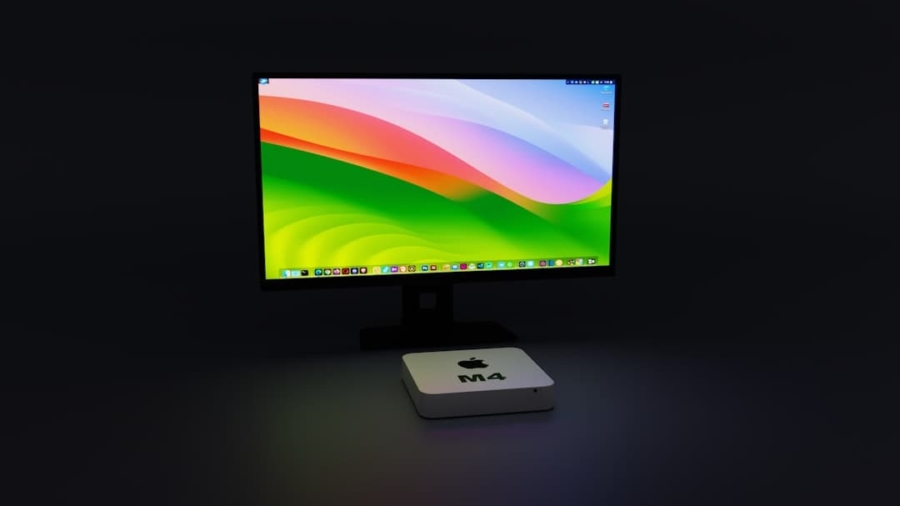In recent years, the landscape of education has undergone a significant transformation, largely driven by the proliferation of mobile technology. The rise of mobile-first e-learning platforms has revolutionized how learners access educational content, making it more flexible and accessible than ever before. With the increasing penetration of smartphones and tablets, educational institutions and organizations have recognized the necessity of adapting their offerings to meet the demands of a mobile-centric audience.
This shift is not merely a trend; it reflects a fundamental change in how knowledge is consumed and disseminated in the digital age. Mobile-first e-learning platforms prioritize the user experience on mobile devices, ensuring that learners can engage with content seamlessly, regardless of their location. This approach has led to the development of applications and websites that are optimized for smaller screens, touch interfaces, and varying internet speeds.
As a result, learners can now access a wealth of resources—from video lectures to interactive quizzes—at their fingertips. The convenience of mobile learning has made it an attractive option for busy professionals, students, and lifelong learners who seek to enhance their skills without being tethered to traditional classroom settings.
Key Takeaways
- Mobile-first e-learning platforms are on the rise, catering to the increasing use of smartphones for learning purposes.
- Mobile learning offers accessibility and convenience, allowing learners to access educational content anytime, anywhere.
- Smartphones provide interactive and engaging learning experiences through features like touchscreens and multimedia capabilities.
- Mobile apps are being utilized for e-learning, offering a wide range of educational resources and tools for learners.
- Personalized learning experiences are made possible through mobile-first platforms, allowing learners to customize their learning journey.
Accessibility and Convenience of Mobile Learning
Mobile learning offers numerous benefits, but one of its most significant advantages is its inherent accessibility. With mobile devices becoming an essential part of our daily lives, learners can engage with educational content at any time and from any location.
Flexibility for Busy Lives
This flexibility is particularly beneficial for individuals who have demanding schedules or those who live in remote areas with limited access to traditional educational institutions. For instance, a healthcare professional can utilize their commute time to complete a module on the latest medical advancements, while a student can review lecture notes during a break between classes.
Inclusive Learning Platforms
Mobile learning platforms often incorporate features that enhance accessibility for diverse learners. Many applications offer adjustable text sizes, audio descriptions, and compatibility with screen readers, catering to users with varying needs. This inclusivity ensures that education is not a privilege reserved for a select few but rather a resource available to all.
Offline Access and Adaptability
The convenience of mobile learning also extends to the ability to download content for offline access, allowing learners to continue their studies even in areas with poor internet connectivity. This adaptability is crucial in fostering an environment where education is truly accessible to everyone.
Interactive and Engaging Learning Experiences on Smartphones

The evolution of mobile-first e-learning platforms has ushered in an era of interactive and engaging learning experiences that were previously unattainable in traditional educational settings. By leveraging the capabilities of smartphones—such as touchscreens, cameras, and sensors—educators can create immersive learning environments that captivate learners’ attention. For example, augmented reality (AR) applications allow students to visualize complex concepts by overlaying digital information onto the real world.
A biology student can use an AR app to explore the anatomy of a cell in 3D, enhancing their understanding through interactive exploration. Additionally, gamification has emerged as a powerful tool in mobile e-learning, transforming mundane lessons into exciting challenges. By incorporating game-like elements such as points, badges, and leaderboards, educators can motivate learners to engage more deeply with the material.
For instance, language learning apps like Duolingo employ gamification techniques to encourage users to practice daily, turning language acquisition into a fun and rewarding experience. This interactive approach not only fosters engagement but also promotes retention by making learning enjoyable and memorable.
Utilizing Mobile Apps for E-Learning
The proliferation of mobile applications specifically designed for e-learning has significantly expanded the options available to learners. These apps cater to various subjects and skill levels, providing tailored content that meets individual needs. For instance, platforms like Khan Academy offer a vast library of instructional videos and practice exercises across multiple disciplines, allowing users to learn at their own pace.
Similarly, platforms like Coursera and edX provide access to courses from prestigious universities, enabling learners to earn certificates or even degrees from their smartphones. Moreover, mobile apps facilitate collaborative learning experiences by incorporating social features that allow users to connect with peers and instructors. Discussion forums, chat functionalities, and group projects can be seamlessly integrated into these platforms, fostering a sense of community among learners.
This social aspect is particularly important in online education, where students may feel isolated without face-to-face interactions. By utilizing mobile apps for e-learning, educators can create dynamic learning environments that encourage collaboration and peer support.
Personalized Learning Experience through Mobile-First Platforms
Personalization is a hallmark of modern education, and mobile-first e-learning platforms excel in delivering tailored learning experiences. By leveraging data analytics and artificial intelligence (AI), these platforms can assess individual learners’ strengths, weaknesses, and preferences. This information allows them to curate personalized learning paths that adapt in real-time based on user performance.
For example, if a student struggles with a particular math concept, the platform can automatically recommend additional resources or exercises focused on that area. Furthermore, personalized learning extends beyond content recommendations; it also encompasses pacing and assessment methods. Mobile-first platforms often allow learners to set their own goals and timelines, enabling them to progress at a speed that suits their unique learning styles.
This autonomy fosters a sense of ownership over one’s education and encourages learners to take initiative in their studies. As a result, personalized learning experiences not only enhance engagement but also lead to improved outcomes as students receive support tailored specifically to their needs.
Incorporating Multimedia and Gamification in Mobile E-Learning

The integration of multimedia elements into mobile e-learning platforms has transformed the way educational content is delivered and consumed. By combining text, audio, video, and interactive graphics, educators can create rich learning experiences that cater to various learning styles. For instance, a history lesson might include video documentaries, interactive timelines, and podcasts featuring expert interviews—all accessible through a single mobile app.
Gamification further amplifies the effectiveness of multimedia in mobile e-learning by introducing game mechanics that motivate learners to participate actively. Elements such as challenges, rewards systems, and narrative-driven content can turn educational activities into engaging quests.
For example, an app designed for coding education might present users with coding challenges framed within an adventurous storyline where they must solve problems to progress through levels. This combination of multimedia and gamification not only makes learning enjoyable but also encourages persistence as learners strive to overcome obstacles and achieve their goals.
Challenges and Solutions for Mobile-First E-Learning Platforms
Despite the numerous advantages offered by mobile-first e-learning platforms, several challenges persist that educators and developers must address. One significant issue is the digital divide; not all learners have equal access to smartphones or reliable internet connections. This disparity can hinder participation in mobile learning initiatives, particularly in underserved communities or developing regions.
To mitigate this challenge, educational institutions can explore partnerships with organizations that provide devices or internet access to those in need. Additionally, developing offline capabilities within apps can ensure that learners can still engage with content without constant connectivity. Another challenge lies in ensuring the quality of educational content delivered through mobile platforms.
With the ease of creating and distributing online courses comes the risk of misinformation or poorly designed materials that may not effectively facilitate learning. To combat this issue, it is essential for platforms to implement rigorous quality assurance processes that involve expert reviews and user feedback mechanisms. By prioritizing high-quality content creation and curation, mobile-first e-learning platforms can maintain credibility and ensure that learners receive valuable educational experiences.
The Future of Mobile-First E-Learning and Smartphone Integration
Looking ahead, the future of mobile-first e-learning appears promising as technology continues to evolve at an unprecedented pace. The integration of artificial intelligence (AI) into mobile learning platforms is poised to revolutionize personalized education further by enabling adaptive learning systems that respond dynamically to individual learner needs. As AI algorithms become more sophisticated, they will be able to analyze vast amounts of data to provide insights into learner behavior and preferences, allowing for even more tailored educational experiences.
Moreover, advancements in augmented reality (AR) and virtual reality (VR) technologies are set to enhance mobile e-learning by creating immersive environments where learners can engage with content in entirely new ways. Imagine students using their smartphones to explore historical sites through AR overlays or participating in virtual labs where they can conduct experiments safely from home. These innovations will not only enrich the learning experience but also prepare students for a future where technology plays an integral role in various fields.
As mobile devices become increasingly powerful and ubiquitous, the potential for mobile-first e-learning platforms will continue to expand. The convergence of education with cutting-edge technology will pave the way for innovative solutions that cater to diverse learner needs while fostering engagement and collaboration across geographical boundaries. In this rapidly changing landscape, it is essential for educators and developers alike to remain adaptable and responsive to emerging trends in order to harness the full potential of mobile-first e-learning for future generations.
A related article to How Smartphones Are Being Used for Mobile-First E-Learning Platforms is the review of the Xiaomi smartwatches found at com/smartwatches-xiaomi-review/’>this link.
Smartwatches are another popular device that can be utilized for e-learning platforms, offering users a convenient way to access educational content on-the-go. The review provides insights into the features and functionality of Xiaomi smartwatches, highlighting their potential for enhancing the mobile learning experience.
FAQs
What are mobile-first e-learning platforms?
Mobile-first e-learning platforms are online learning systems that are designed and optimized for use on mobile devices, such as smartphones and tablets. These platforms prioritize the mobile user experience and are tailored to the specific capabilities and limitations of mobile devices.
How are smartphones being used for mobile-first e-learning platforms?
Smartphones are being used for mobile-first e-learning platforms in various ways, including accessing course materials, participating in online discussions, submitting assignments, taking quizzes and tests, and interacting with instructors and peers through messaging and video conferencing.
What are the benefits of using smartphones for mobile-first e-learning platforms?
Using smartphones for mobile-first e-learning platforms offers benefits such as convenience and flexibility, as learners can access educational content anytime and anywhere. Additionally, smartphones provide features such as push notifications, location-based services, and camera capabilities that can enhance the learning experience.
What are some examples of mobile-first e-learning platforms that are optimized for smartphones?
Some examples of mobile-first e-learning platforms that are optimized for smartphones include Coursera, Udemy, Khan Academy, and Duolingo. These platforms offer a wide range of courses and learning materials that are accessible and interactive on smartphones.
What are the challenges of using smartphones for mobile-first e-learning platforms?
Challenges of using smartphones for mobile-first e-learning platforms include limited screen size, potential distractions from other apps and notifications, and varying levels of internet connectivity and data usage. Additionally, some educational content may not be fully optimized for mobile viewing.

